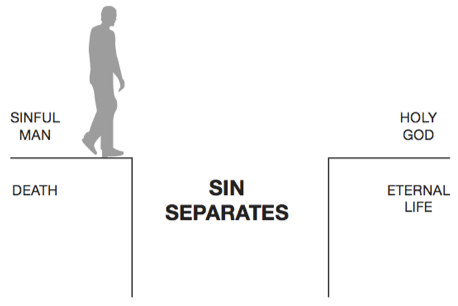

The Free Wesleyan Church (The Methodist Church in Tonga, Siasi Uesiliana Tau'ataina 'o Tonga) represents the single largest religious group with active members. The roots of the church closely parallel Tonga's modern history, closer relations with foreign influence.
As a church with adherents throughout the islands and in foreign lands, the administration office of the Free Wesleyan Church is located on the outskirts of the Central Business District, beside one of its monuments, the Centenary Church. Established through the conciliatory of Queen Salote Tupou III to bring together two branches of the early Methodist Movement (the Free Church of Tonga and the Wesleyans (Siasi Fakaongoongo), the Free Wesleyan Church adherents predominate much of Tongan society.
The Free Wesleyan Church operates on a hierarchical system governed by a General Assembly that meets annually to review the decisions of its major representatives: the President of the Conference, Secretary of the Conference, and Conference Working Committee.
Methodism was first introduced into Tonga by missionaries from the London Missionary Society. Their arrival with the Duff was in 1797. Unfortunately, their attempt was unsuccessful. In nearly 30 years, the Wesleyan Methodist Mission began a stable and well-organized mission work from London and Sydney. Even though Tonga was designated as a "Friendly Island" by Cook, Tonga was considered dangerous to visit during the first two decades of the nineteenth century. Neil Gunson summarises the first period of sustained contact with papalangi and missionaries: 1796 – 1826. He argues that Tonga met the outside challenge of European ideas and skills, made its adjustment, and opted for Christianity based on thirty years of experience. Many Island Missionaries and thoughtful beachcombers contributed to this outcome, perhaps more so than European Missionaries.
The Wesleyan Missionaries continued to face difficulties even after 1826. There was strong opposition to protecting traditional standards and values from the priest caste, the chiefs, and the people. Some of the problems were also caused by the missionaries themselves. There were times when they echoed their home countries' social and religious backgrounds, and, of course, they were not very sensitive in their approach in such an extraordinary environment. Nevertheless, they were driven mainly by a strong desire to save the lost 'at all costs' together with a conviction that their cause was righteous. In 1834 – a revival movement by the “Tongan Pentecost” swept over the islands. This revival is still regarded as crucial for the development of Christianity in Tonga.
It confirmed and extended what had already begun with several crucial conversions such as that of Taufa’ahau, who was already on the way to gaining political power over the group and was soon to secure the establishment of Christianity in the whole Kingdom as King George Tupou I. Taufa'ahau succeeded in keeping Tonga out of conflict with the colonial powers of the day. As King George Tupou I was determined to preserve Tonga's political independence, the idea of having an independent church likely developed.
In 1880 – King George Tupou I proclaimed:
“Tonga should have an independent church .... the missionaries and the whole world should see that I am determined to have separation."
It is clear from this evidence that King Tupou I did not make this decision solely due to the influence of Shirley Baker, a former missionary and Tupou's advisor. The separation between the Free Church of Tonga and the Wesleyan Mission occurred in 1885.
During that time, the Census reported that "more than 90% of Vava'u and Ha'apai, as well as a majority of Tongatapu, were willing to follow the King in his breakaway to form the Free Church." However, in violation of the 1875 constitution, which guaranteed religious freedom, the remaining Wesleyans were persecuted. A small group of people, suspected of being involved in a murder attempt against Baker, was exiled to Fiji in 1887. In 1924, Queen Salote (leader of the Free Church) united the Free Church and the Wesleyan Mission. She is said to have been influenced by her husband's being a Wesleyan high chief named William Tupou Tungi.
Queen Salote's proposal was opposed by Jabez Watkin, the Free Church of Tonga president at the time. As a result, the Queen dismissed him, so he founded the Church of Tonga. The minority group consisted of approximately 1,234 individuals. The majority then consisted of 16,848 members. They became members of the newly established Free Wesleyan Church of Tonga. From that time forward, this was the dominant church in Tonga.
Our Presidents
The presidents of the Church since 1924.
Rev. Setaleki Manu
1924 - 1925Rev. Roger C.G. Page
1925 - 1946Rev. Alfred Mckay
1946 - 1956Rev. Ronald A W. Woodgate
1956 -1961Rev. Howard W. Secomb
1961 - 1963Rev. George G. Harris
1963 - 1969Rev. Justin G. Gooderham
1969 - 1971Rev. Dr. Sione 'Amanaki Havea
1971 - 1977Rev. Dr. U. Huluholo Moʻungaloa
1977 - 1982Rev. Dr. Sione 'Amanaki Havea
1982 - 1992Rev. Sione Lepa Toʻa
1992 - 1993Rev. Lopeti Taufa
1993 - 1998Rev. Dr. 'Alifaleti Malakai Mone
1998 - 2009Rev. Dr. 'Ahio
2009 - 2021Rt. Hon. Rev. Dr. Tevita Koloa'ia Havea
2021 - current























